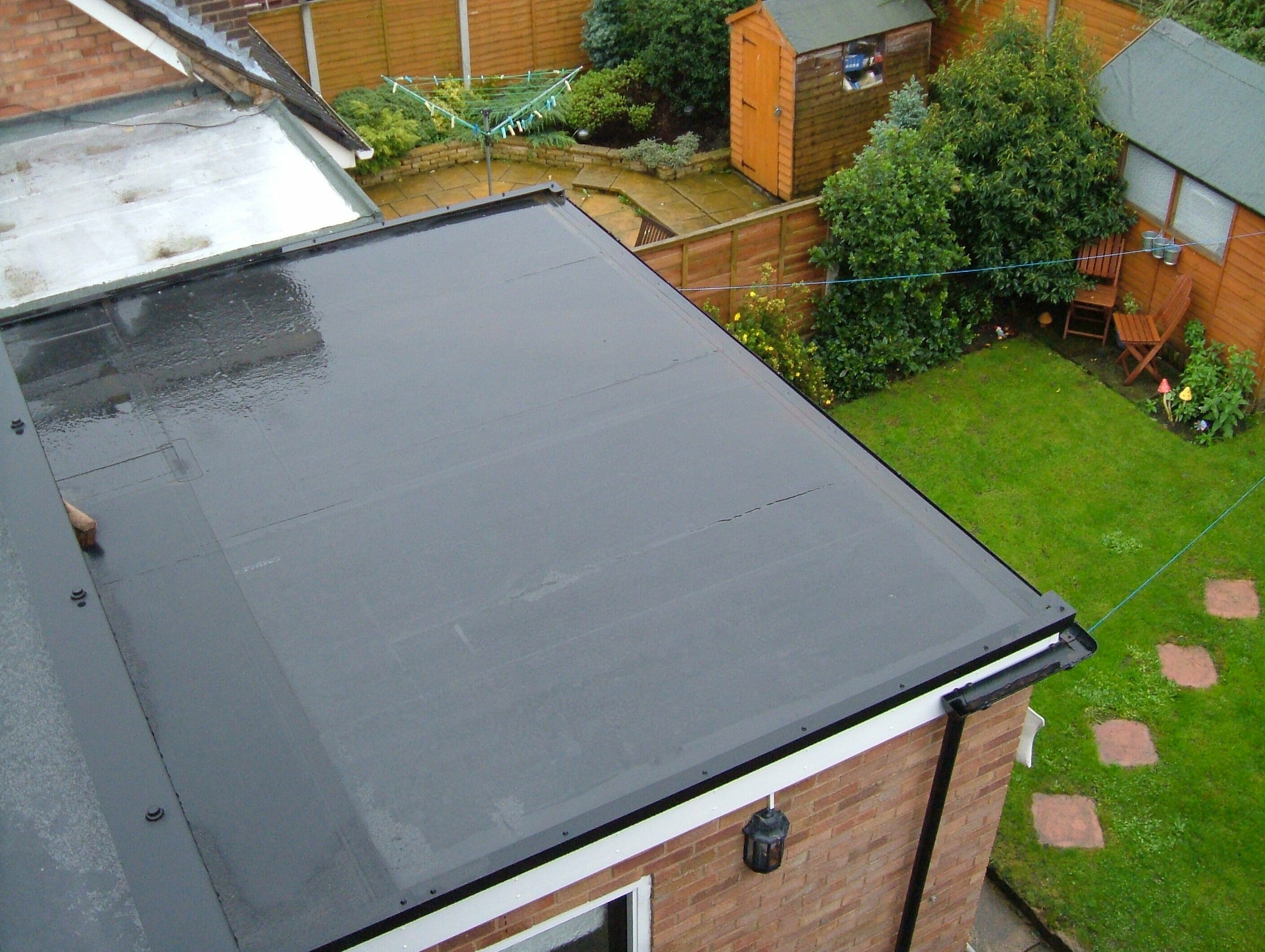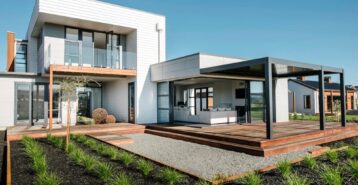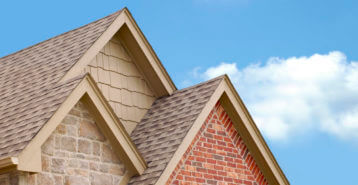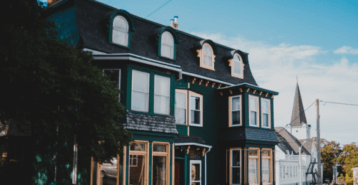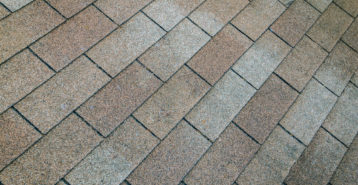What Are Gambrel Roofs?
Gambrel roofs are easy to recognize by their two-sided, symmetrical shape, each side with two different slopes. The lower slope is steeper, while the upper one is gentler. This classic roof design is often seen on barns and historic homes, which is why it’s sometimes called a barn roof. Though not as common in today’s residential builds, it’s making a comeback thanks to the popularity of modern farmhouse styles.
This roof design isn’t just charming, it’s practical too. The unique shape creates extra space inside the home, often used for storage or even additional living space.
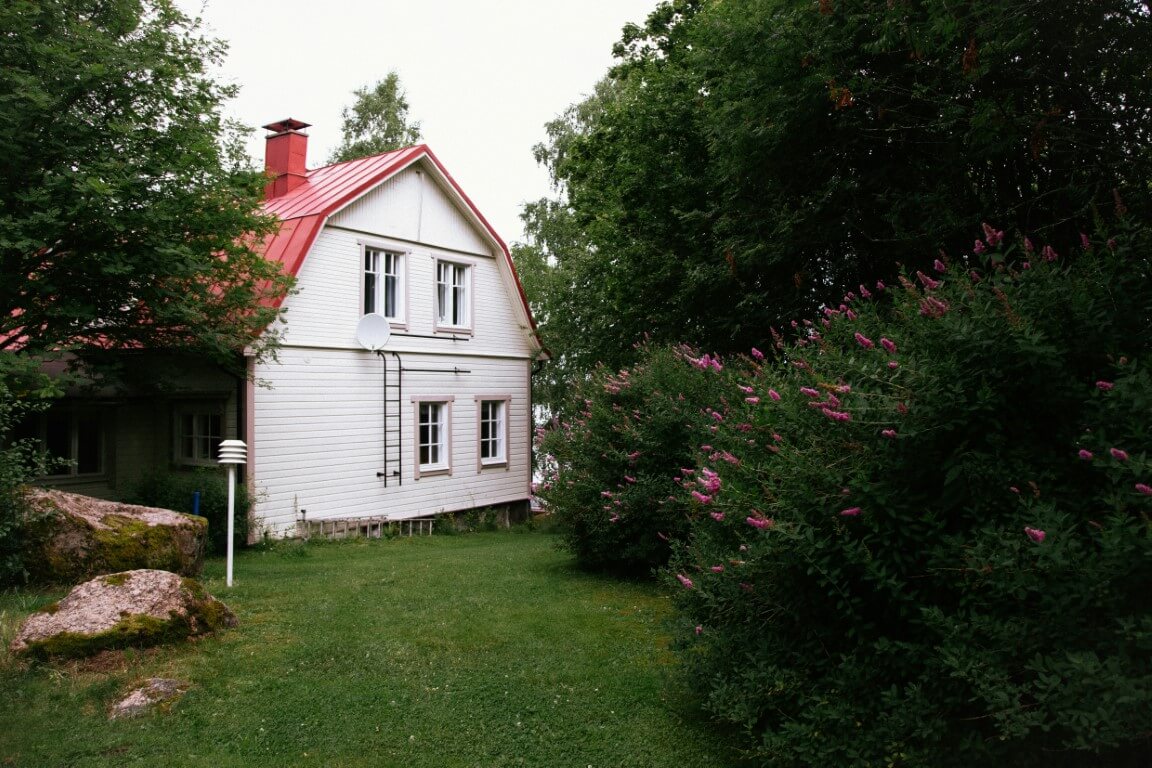
How Are They Installed?
Installing a gambrel roof requires framing the structure with trusses or rafters that support the dual-slope design. The steeper lower section is built to allow more headroom, while the upper slope ensures water and snow shed easily.
Builders typically add roofing materials like asphalt shingles, metal panels, or tiles, depending on the homeowner’s style and budget. For added natural light and ventilation, dormer windows may be installed in the lower slope. The process is fairly straightforward, but more complex roofs with dormers or valleys may require more time and materials.
How Much Does a Gambrel Roof Cost to Install?
The cost to build a gambrel roof on a 2,000-square-foot home usually ranges from $16,000 to $30,000, or about $8 to $15 per square foot. This cost covers framing only; materials and labor for finishing will add to the total.
Several factors can affect the price, including:
- Roof size and pitch
- Local labor rates
- Roofing material choices
- Site complexity and access
- Regional climate and building codes
Materials like asphalt shingles or metal can cost an extra $4 to $20 per square foot, and contractor labor runs around $40 to $80 per hour.
Pros and Cons of Gambrel Roofs
Gambrel roofs bring a lot to the table in terms of style and functionality, but like any roofing design, they have their strengths and weaknesses. Knowing both sides can help you decide if this roof style is the right fit for your home and lifestyle.
Benefits of Gambrel Roofs
These roofs are more than just good-looking. Their shape and structure offer several practical perks:
- Visual Appeal: There’s a reason gambrel roofs have stood the test of time — they add that classic charm to Colonial, Georgian, and farmhouse-style homes. If you’re aiming for a timeless, rustic look, this roof delivers.
- Extra Interior Space: Because of the way the slopes are designed, you get more headroom inside. That means more room for an attic, storage, or even a bonus living area like a loft or guest room.
- Good Drainage: The steep lower slope does a great job of shedding rain and snow. That’s a big plus in areas where heavy downpours or snowstorms are common.
- Lower Framing Costs: Compared to more complex designs like hip or mansard roofs, gambrel roofs are typically easier and more affordable to frame, especially on smaller structures like sheds or garages.
- Window-Friendly: Dormer windows fit naturally into a gambrel roof’s shape, which not only adds architectural interest but also brings in extra sunlight to brighten up the space inside.
Disadvantages of Gambrel Roofs
Gambrel roofs are full of character, but they also come with a few challenges you’ll want to keep in mind:
- Wind Vulnerability: Because of their height and wide surface area, gambrel roofs can be more exposed to strong winds. This is especially true for large structures like barns, which may need extra reinforcement in windy regions.
- Ventilation Challenges: With such a high ceiling, heat tends to rise and stay put. Without proper ventilation, the space under a gambrel roof can get stuffy and hard to cool.
- Snow Buildup: The top slope of a gambrel roof is usually flatter, which can make it easier for snow to accumulate. Over time, that added weight could stress the structure if not cleared regularly.
- Insulation Needs: Since there’s often no attic floor separating the roof from the living area, insulating a gambrel roof properly can be tricky. It usually requires more planning to maintain comfortable indoor temperatures year-round.
Gambrel Roof Design Features
One of the best things about gambrel roofs is how flexible they are. While the basic shape stays the same, you can add design elements that make the roof more functional, or just give it a little extra flair. Here are some (but not all) features you’ll often see on gambrel-style homes:
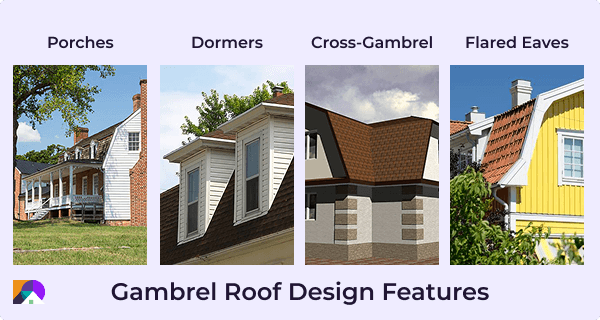
1. Overhangs (Like Porches)
Some gambrel roofs have extended overhangs, like porches, with brackets or posts for support. This not only adds shade and protection around doors and windows, but it also gives the home a more traditional, farmhouse-style look.
2. Dormers
Dormers are a great way to bring in more natural light and make attic spaces feel more open. These little extensions pop out of the roof’s lower slope and usually include a window. They’re perfect if you’re planning to turn that upper space into a bedroom, office, or cozy reading nook.
3. Cross-Gambrel Layout
If you want to go bigger, a cross-gambrel design might be the way to go. It’s basically two gambrel roofs that intersect, creating more space inside and adding some visual interest on the outside. This setup works well for larger homes or more complex floor plans.
4. Flared Eaves
Flared eaves add a subtle curve at the bottom edge of the roof, which helps direct rainwater away from your home—and looks pretty sharp, too. It’s a small detail that gives the roof a little more character while also being practical.
Gambrel vs. Mansard Roof
Gambrel and mansard roofs are often mistaken for each other because of their similar dual-slope appearance. However, there are key differences in how they’re designed, how they look from the outside, and how they function inside the home.
Gambrel Roof
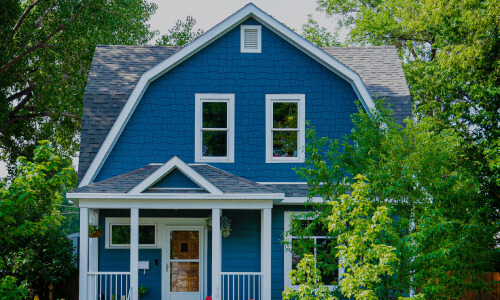
The gambrel roof is a classic design best known for its barn-style appearance and historical use in Colonial-era homes. It’s a practical choice for homeowners looking for style and extra space without high construction costs.
- Structure: Features two slopes on each of its two sides. The lower slope is steeper than the upper one, creating a profile reminiscent of traditional barns.
- Sides: Covers only two sides of the building, with vertical gable ends on the other two sides.
- Design: Commonly seen in Dutch Colonial and Georgian-style homes, as well as barns and sheds.
- Advantages: Offers increased attic space and is relatively easier and more cost-effective to construct compared to more complex roof styles
Mansard Roof 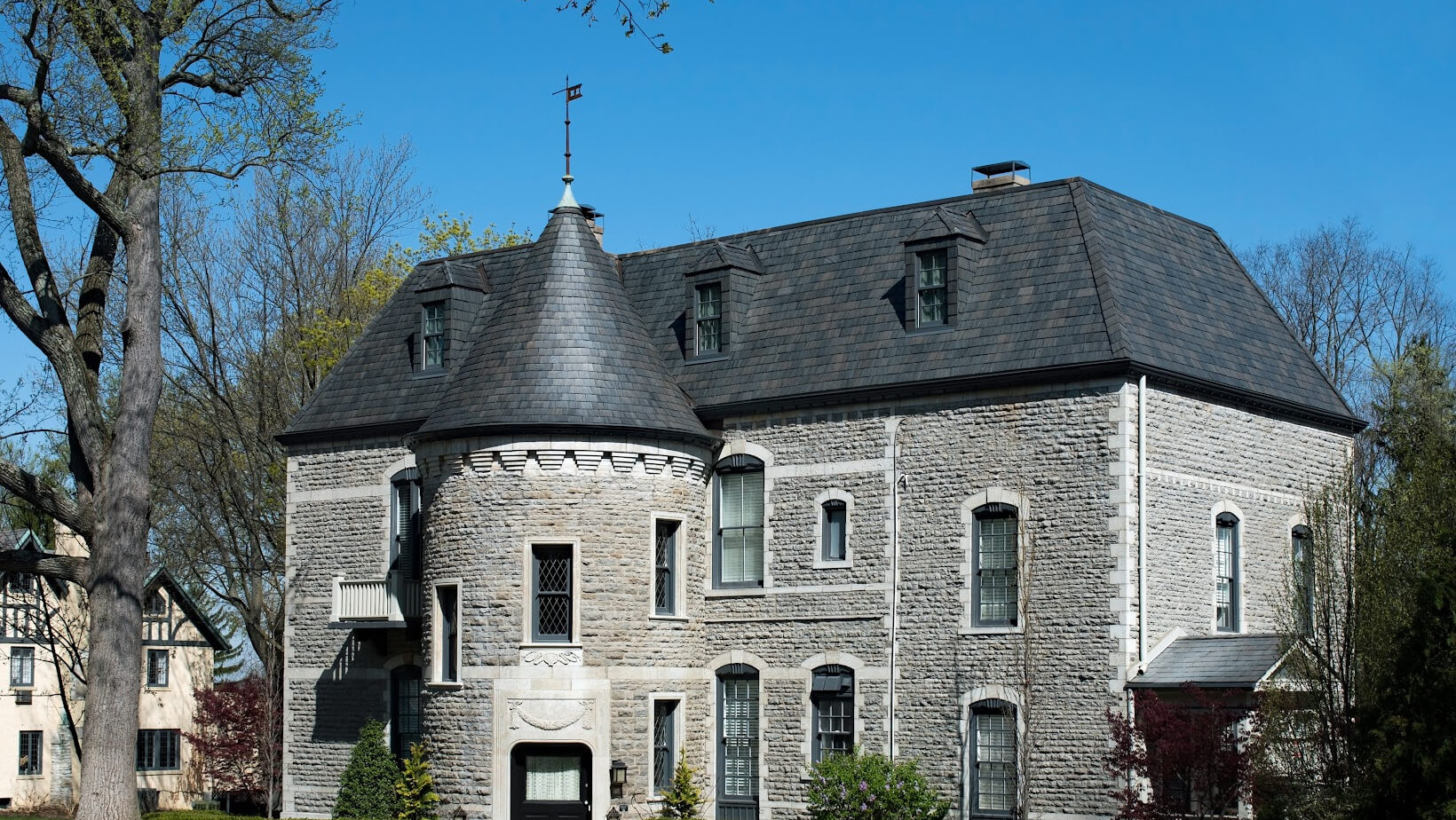
Think of the mansard roof as the gambrel’s cousin in the world of hipped roofs. While gambrel roofs have two sides, mansard roofs take that double-slope design and wrap it around all four sides of the building, giving it a more enclosed, elegant look. They’re a smart choice for homeowners who want to maximize space and add architectural flair.
- Structure: Comprises two slopes on all four sides of the building. The lower slope is much steeper, often nearly vertical, while the upper slope is almost flat.
- Sides: Encircles the entire building, creating a uniform appearance on all sides.
- Design: Originated in France and is a hallmark of Second Empire architecture. Often includes dormer windows to maximize usable space in the attic.
- Advantages: Provides ample additional living space in the attic and allows for more elaborate architectural details.
FAQ: Gambrel Roofs
What is the point of a gambrel roof?
A gambrel roof is designed to maximize space and add architectural charm. Its unique two-slope design — steep on the bottom, shallow on top — creates more usable interior space for attics, lofts, or storage, without increasing the building’s overall height. Gambrel roofs also promote good drainage and are less expensive to frame than more complex roof styles, making them a popular choice for barns, Colonial homes, and modern farmhouses.
What is the difference between a gambrel and a mansard roof?
The main difference is in the number of sides with dual slopes. A gambrel roof has two slopes on two sides, forming vertical gables on the other two ends. In contrast, a mansard roof has two slopes on all four sides, creating a box-like structure with a more enclosed look. Gambrel roofs are often seen on barns and Dutch Colonial homes, while mansard roofs are associated with French-inspired architecture and offer more attic living space.
What are the angles for a gambrel roof?
While angles can vary, the typical gambrel roof features:
- A steep lower slope between 60° and 70°
- A shallow upper slope between 20° and 30°
This combination allows for headroom inside while still encouraging water and snow runoff. The precise angles may depend on the home’s dimensions and regional climate needs.
What are 3 disadvantages of a gambrel roof?
- Poor Wind Resistance: The tall, open design makes them more vulnerable in high-wind areas.
- Snow Buildup: The flatter upper slope can accumulate snow, which may cause strain without regular clearing.
- Ventilation and Insulation Challenges: Without proper planning, heat can build up inside, and insulation can be tricky to install effectively.
How much does a gambrel roof cost?
On average, a gambrel roof costs between $8 and $15 per square foot to build the frame alone. For a 2,000-square-foot home, expect to pay $16,000 to $30,000. This doesn’t include roofing materials or finishing labor, which can add $4 to $20 per square foot depending on what you choose (e.g., asphalt shingles, metal panels).
What material is best for a gambrel roof?
The most common materials installed on gambrel roofs are asphalt shingles and metal panels.
